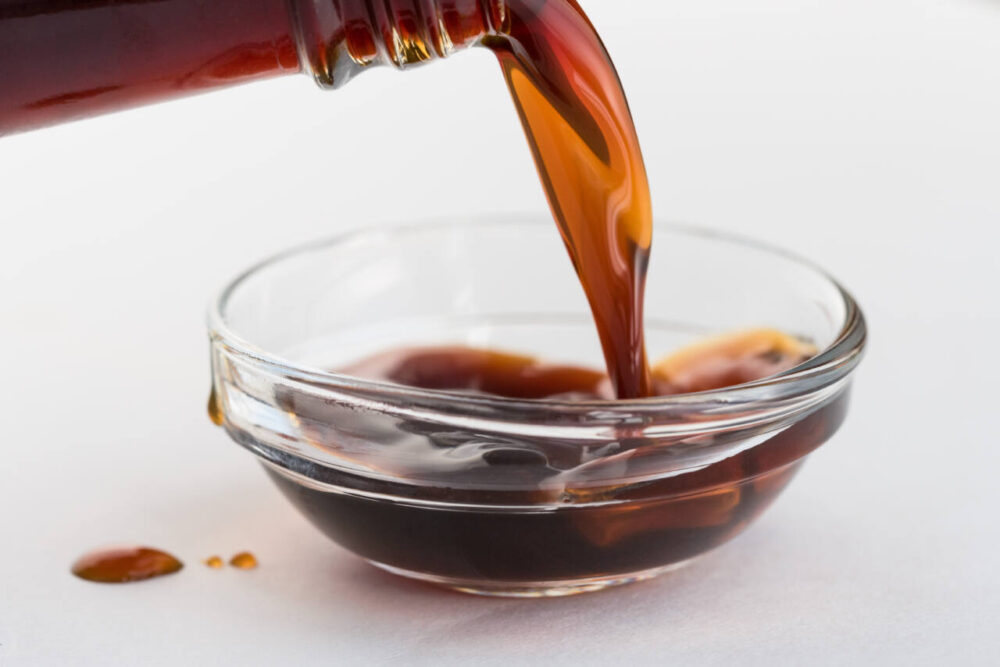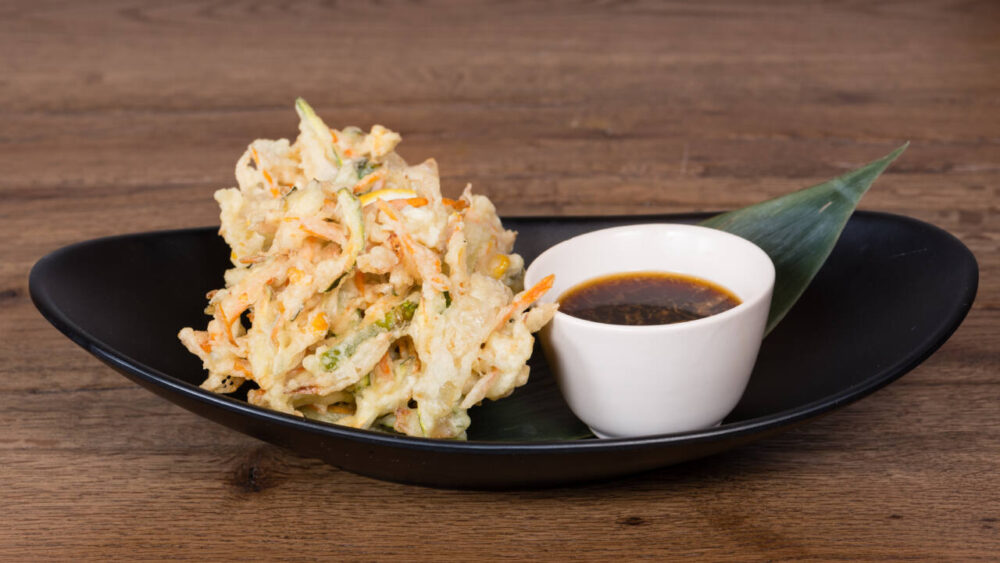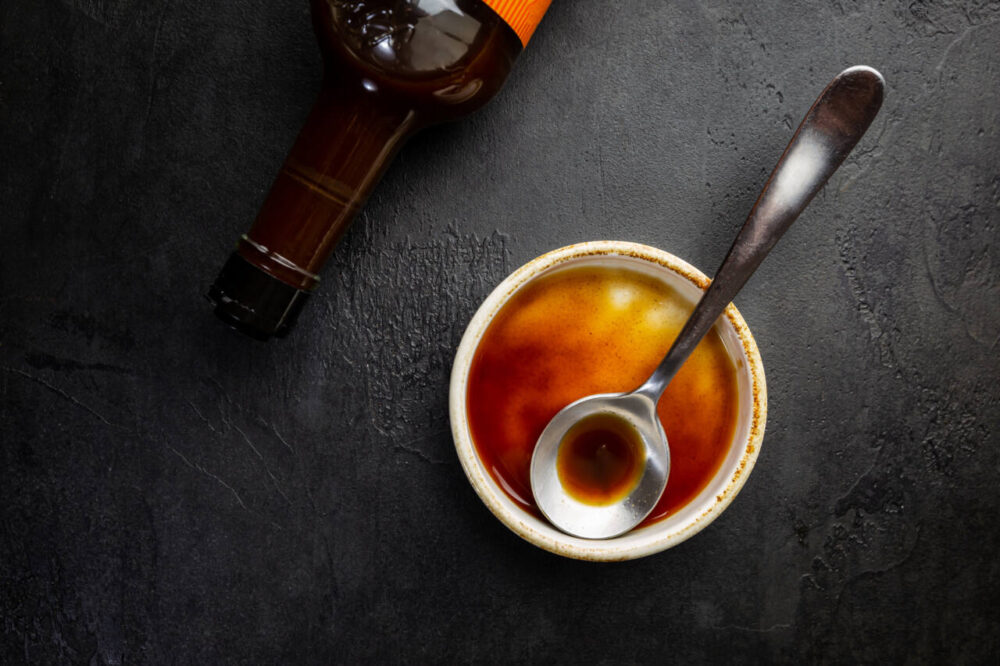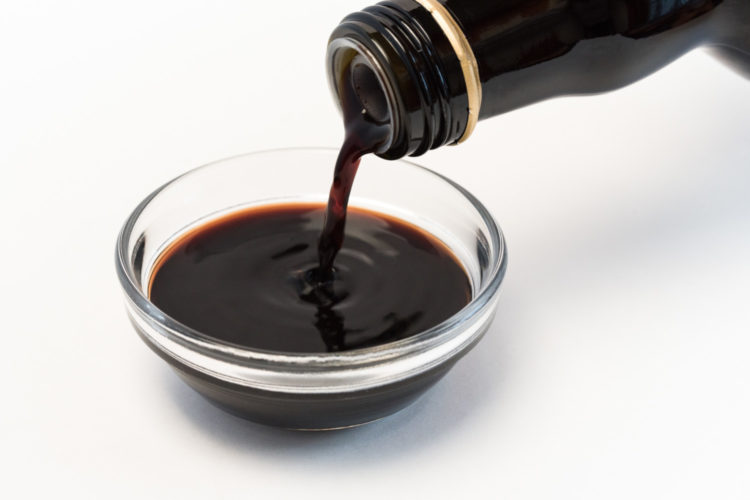The products and services mentioned below were selected independent of sales and advertising. However, Simplemost may receive a small commission from the purchase of any products or services through an affiliate link to the retailer's website.
From rice and noodle dishes to salty marinades and glazes for seitan, salmon or meat, soy sauce can add a savory kick to any recipe. But life happens, and maybe one day you discover you need a substitute because you’ve run out of soy sauce mid-recipe. Or maybe you’re looking for an alternative that avoids soy or GMO, contains less sodium, or better aligns with your nutrition or dietary goals.
Soy sauce is high in antioxidants, which is a benefit, but it also contains a high amount of sodium; you may get as much as 38% of the daily recommended intake in one tablespoon of soy sauce. A diet with too much salt can be linked to health issues like high blood pressure and heart disease. This doesn’t necessarily mean that soy sauce is bad for you or unhealthy, but it’s something to be aware of, particularly if you’re limiting the amount of salt in your diet.
Fortunately, soy sauce isn’t the only option you can use to add a bit of umami flavor to your food. Here are five soy sauce substitutes to try the next time you plan to cook a dish that calls for this tasty ingredient.
1. Coconut Aminos

Love the flavor of soy sauce but don’t love the sodium? That’s why coconut aminos are a popular health-conscious alternative to soy sauce. (They’re also compliant with diets like Whole30.)
Made from fermented coconut tree sap and salt, coconut aminos contain significantly less sodium than soy sauce and are also free of common allergens like gluten and soy. They’re also a bit sweeter, thanks to the natural sugars in coconut, which make them a great substitute for dark soy sauce, as well.

MORE: This teriyaki sauce recipe uses only 4 ingredients
2. Liquid Aminos
If you’re more concerned about taste and less about sodium levels, liquid aminos are another great soy sauce substitute. Like soy sauce, liquid aminos are made from soybeans; however, the soybeans are not fermented in this case. Instead, they’re treated with a hydrochloric acid solution to break them down into amino acids.
The resulting liquid is a good source of the building blocks of protein, and it’s also gluten-free and milder in flavor. However, be aware that — like soy sauce — liquid aminos contain a significant amount of a person’s recommended daily sodium intake.
3. Tamari

A Japanese sauce called tamari is another close substitute to soy sauce in terms of flavor. Tamari is also a by-product of soybeans, but it’s pressed from the liquid that comes from miso (fermented soybean) paste.
The main difference between it and regular soy sauce is that it’s made without wheat and generally has no additives — it’s just water, salt and soybeans. It’s also darker in color and less salty in flavor. Tamari contains less sodium than soy sauce on average.

4. Worcestershire Sauce
Although the appearance of Worcestershire sauce is very similar to soy sauce, its ingredients are distinctly different. The sauce, which originally hails from the U.K., is made from vinegar, anchovies, molasses, onion, tamarind, sugar or corn syrup, and spices, and may or may not contain wheat, depending on the brand.
It also has a tangier, stronger, more complex flavor and less sodium when compared to soy sauce. Unlike the other substitutes, you should dilute Worcestershire sauce when using it as a soy sauce substitute; Tasting Table recommends a 3:1 ratio of sauce to water.

Make Your Own with Soy Sauce Substitute Recipes
If you want to avoid having to buy a specialty sauce for a single recipe or just need to avoid a run to the grocery store, it’s possible to make a DIY soy sauce substitute. Recipes often include common ingredients that can be found in many people’s pantries, like balsamic vinegar, beef bouillon, molasses, and spices like pepper, ginger and garlic.
According to this AllRecipes version, you only need to combine the ingredients in a saucepan with a little more than a cup of water, bring to a boil, and then simmer. The resulting liquid makes for a great alternative, thanks to the combination of sweet and savory flavors of the ingredients. It’s also much lower in sodium than traditional soy sauce.
No beef bouillon? You can find other similar recipes that call for beef or vegetable stock instead, including this one from Accidentally Crunchy. Some also use mushrooms to enhance that umami flavor, like this one from Wholesome Yum.
Lastly, Real Simple suggests just using balsamic vinegar as a soy sauce substitute — it’ll work as long as soy sauce isn’t meant to be the most dominant flavor in the dish. Just be careful not to go overboard and drown your food in balsamic vinegar, because it’s known for having a very tangy and somewhat pungent taste on its own. Instead, it’s best to just drizzle a bit of balsamic vinegar on top, then follow with a few shakes of salt.

In a pinch, these soy sauce substitutes can help brighten up any recipe and add a bit of saltiness and umami flavor. Which ones have you tried?
The 4 best substitutes for soy sauce originally appeared on Simplemost.com


